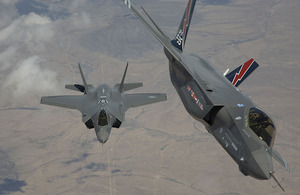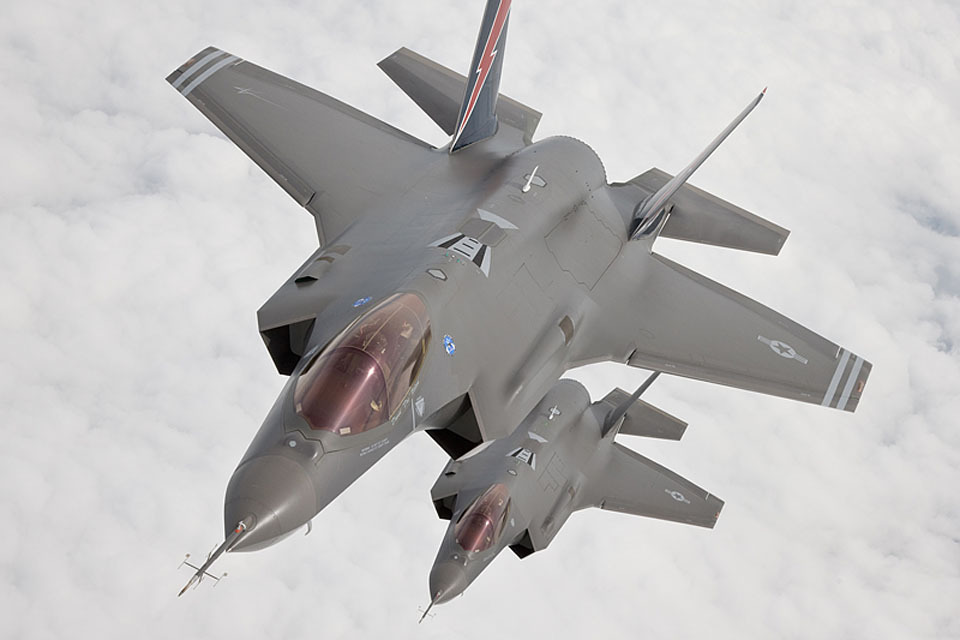RAF test pilot on Lightning II
The radical F-35 Lightning II Joint Strike Fighter is set to become the future of air combat according to the RAF test pilot putting the groundbreaking aircraft through its paces.

Two of the first F-35 aircraft arrive at Edwards Air Force Base in the Mojave Desert, California, for US military testing [Picture: © 2009 Lockheed Martin Corporation]
As the UK public got its first glimpse of the RAF’s stunning Harrier replacement at Farnborough, Squadron Leader Steve Long said:
It is like an iPhone on speed. It is a quantum leap in terms of technology and aerodynamics.
Bristling with technology, the F-35 features nose-mounted, electronic warfare aerials fitted around the aircraft and an electro-optical targeting system - or sniper pod.
One of the most innovative features is the distributed aperture system - dubbed the ‘God-Eye’ - which gives the pilot 360-degree visibility via a digital helmet display.
Sqn Ldr Long said:
It is essentially a 360-degree infrared search and track system. You can see what is beneath or behind the aircraft through a screen fitted to your helmet. It is amazing having total visibility.

Two F-35 aircraft en route to Edwards Air Force Base, California [Picture: © 2009 Lockheed Martin Corporation]
The former Harrier pilot has been stationed with the Joint Strike Fighter (JSF) programme at the US Navy’s Patuxent River Air Base in Maryland for the past 18 months, flying the B-variant of the test aircraft.
The JSF, or F-35 Lightning II, is set to replace the Harrier. Sqn Ldr Long is only the seventh pilot to fly the JSF and will be testing its vertical take-off and landing abilities in operational-based scenarios later this year with the US Navy.
There are presently three variants of the test aircraft (A, B and C) some of which have been created solely for tests and will not be flown in any other capacity.
There are currently four B variants, with a fifth coming out for testing at the end of this year with a complete set of electronics, radars and warfare systems.
The present four variants cover the short take-off and vertical landing development, flutter (monitoring aerodynamic or structural interactions), loads and mission systems.
Test aircraft carry hundreds of sensors monitoring vibration, temperature, deflections, and stresses and strains as the aircraft is flown, which are in turn monitored by 26 engineers on the ground.